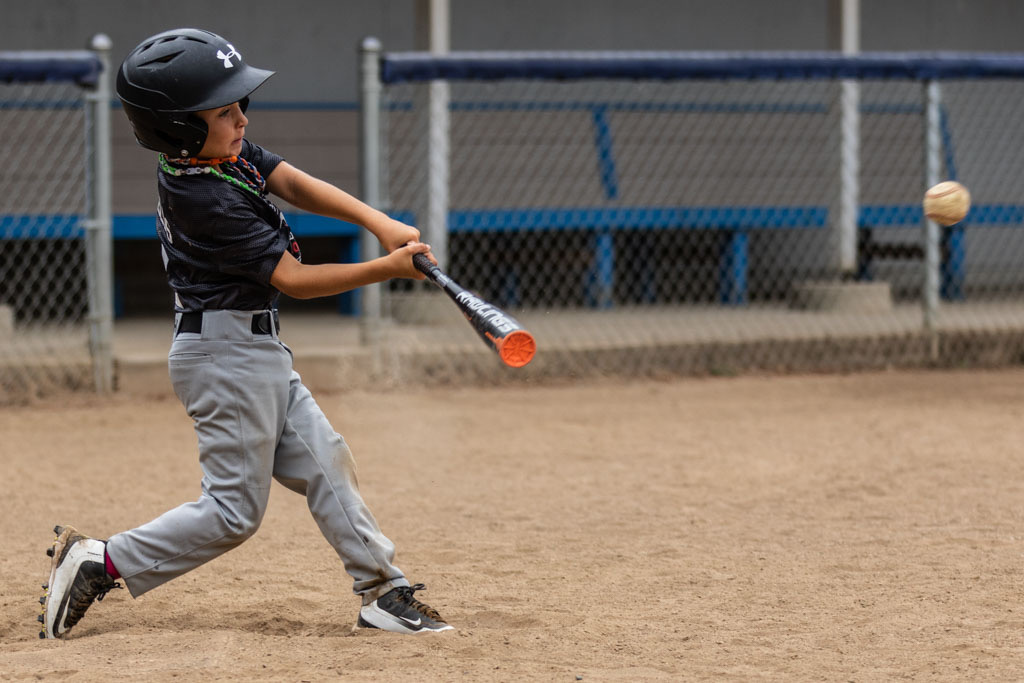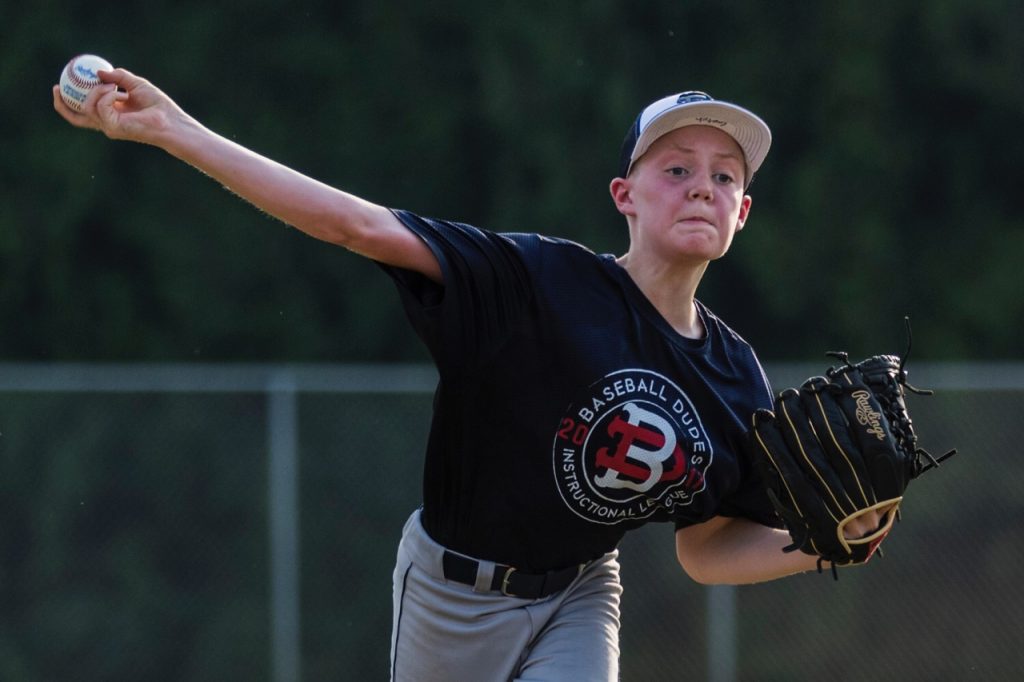 There are a few things batters do that often tell us how to get them out. They show their approach and their holes. As pitchers and catchers, when we pay attention and know what to look for, it makes pitch selection a little easier.
There are a few things batters do that often tell us how to get them out. They show their approach and their holes. As pitchers and catchers, when we pay attention and know what to look for, it makes pitch selection a little easier.
1. Position in the box and stride direction. Close to the plate. Far from the plate. Back in the box. Up in the box.
Close to the plate but stride to open. The thought may be if they are close to the plate, it may be easier to get them out with inside pitches but if they stride open, they actually might hit the inside pitches better. That open stride opens up the outer half to get them out even though they started close to the plate. Attack away and go from there.
Stance far from the plate. The initial thought may be we can get them out on the outer half but if they “dive” with their stride towards the plate, their approach is to get to that outer pitch actually making it harder for them to hit the inside pitch. Attack inside and go from there.
Back the box may show they are giving themself more time and space to read the pitch but this can also give your off speed pitches more space to move. Try off speed down in the zone and go from there.
Up in the box may show they are trying to take away space for those off speed pitches to work. Go with the fast one and go from there.
2. Read their foul balls.
If they’re late on your fastball, they’re telling you to stick with the hard one. If they are early on your fastball, pulling it foul, it’s a great time to throw a change up or other off speed next.
3. Aggressive on the first pitch.
Don’t shy away from this. Use it to your advantage. As pitchers we need to learn to embrace their aggressiveness. Attack the bottom of the zone. Try a first pitch off speed down in the zone. If they get a hit, move on and let’s try to get two outs with the next pitch. Use their aggressiveness to our advantage. One pitch outs are great!!
4. Watch for teams that have an approach of taking the first pitch or taking until they get a strike. No need to get fancy or picky, attack middle down. Put them in the hole with the first pitch. Batting averages go down dramatically with first pitch strikes.
5. Runners in scoring position.
Batters have a habit of getting overly aggressive when there are runners in scoring position (2nd and/or 3rd). Be ready for them to swing at the first pitch. Throw your most confident ground ball pitch. Again, don’t be afraid of contact, use it to your advantage.
With all this said, not all of these are applicable to all levels and all players/pitchers. But understanding the game as coaches can help with our ability to teach it and as players, it can help us be smarter better competitors.
Play the game within the game. Talk about the game. Talk about what we are seeing. Coaches, teach the game and empower your players to play the game according to what they are seeing in their opponents.
 Chris Gissell (175 Posts)
Chris Gissell (175 Posts)Founder of Baseball Dudes. Blessed with three beautiful children and an amazing wife. Baseball is my life, after my family, and I love sharing what I have learned from it. Thanks for taking the time to view what we offer here at Baseball Dudes.
 1. Preparedness. At team practice, at home, on their own time, they are focused, purposeful and dedicated to getting better and staying ready. They are beasts at preparation.
1. Preparedness. At team practice, at home, on their own time, they are focused, purposeful and dedicated to getting better and staying ready. They are beasts at preparation. 









 One of my favorite drills/games to have the players play. It’s always funny to hear the groans and comments from the first timers. Interesting to hear kids say “tee’s are for little kids!” Haha! But when we explain how the game will go, boy do their eyes light up!!
One of my favorite drills/games to have the players play. It’s always funny to hear the groans and comments from the first timers. Interesting to hear kids say “tee’s are for little kids!” Haha! But when we explain how the game will go, boy do their eyes light up!! Strong competitors are solid with both but what’s the balance? Is one more important than the other? When do you work on mechanics? When do we talk and teach approach?
Strong competitors are solid with both but what’s the balance? Is one more important than the other? When do you work on mechanics? When do we talk and teach approach? 
 • Position players, study the opposing pitchers. Look for patterns in pitch selection. Tells in their delivery. How they handle hold times and pick off moves with runners on. See if they pay attention to the runner on third.
• Position players, study the opposing pitchers. Look for patterns in pitch selection. Tells in their delivery. How they handle hold times and pick off moves with runners on. See if they pay attention to the runner on third. The game blessed me with the opportunity to play in Japan for the 2006 and 2007 seasons. I played for the Seibu Lions out of Tokorozawa which is in the Saitama Prefecture. I like to say it is like a suburb of Tokyo. We were a few trains away from famous Shinjuku. We spent a few off days wondering the streets of that extremely busy area.
The game blessed me with the opportunity to play in Japan for the 2006 and 2007 seasons. I played for the Seibu Lions out of Tokorozawa which is in the Saitama Prefecture. I like to say it is like a suburb of Tokyo. We were a few trains away from famous Shinjuku. We spent a few off days wondering the streets of that extremely busy area. Besides physical tools, what goes on between our ears is absolutely vital for not just performing well but performing well consistently.
Besides physical tools, what goes on between our ears is absolutely vital for not just performing well but performing well consistently.  As pitchers we are always trying to be better. We work to throw harder. We try to get our change up to drop more. We would love for our breaking pitchers to be sharper. This is a constant desire for those that spend years doing it, that’s part of what striving for excellence looks like. Now, there are most certainly things we can do to make our stuff “play” better than what it actually is. “Play” meaning how our stuff appears to the batters. Here are 5 ways to help make this happen…
As pitchers we are always trying to be better. We work to throw harder. We try to get our change up to drop more. We would love for our breaking pitchers to be sharper. This is a constant desire for those that spend years doing it, that’s part of what striving for excellence looks like. Now, there are most certainly things we can do to make our stuff “play” better than what it actually is. “Play” meaning how our stuff appears to the batters. Here are 5 ways to help make this happen…
 The variations of grips for this pitch seem to be endless. There are common ones for sure but with different thoughts on finger pressure, finger locations and release, there are many options. I suggest experimenting with all ideas until you find what works for you.
The variations of grips for this pitch seem to be endless. There are common ones for sure but with different thoughts on finger pressure, finger locations and release, there are many options. I suggest experimenting with all ideas until you find what works for you.